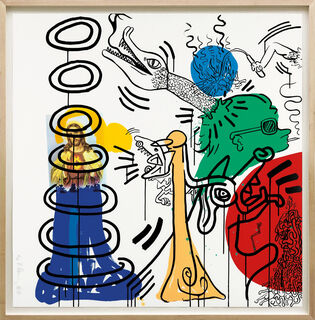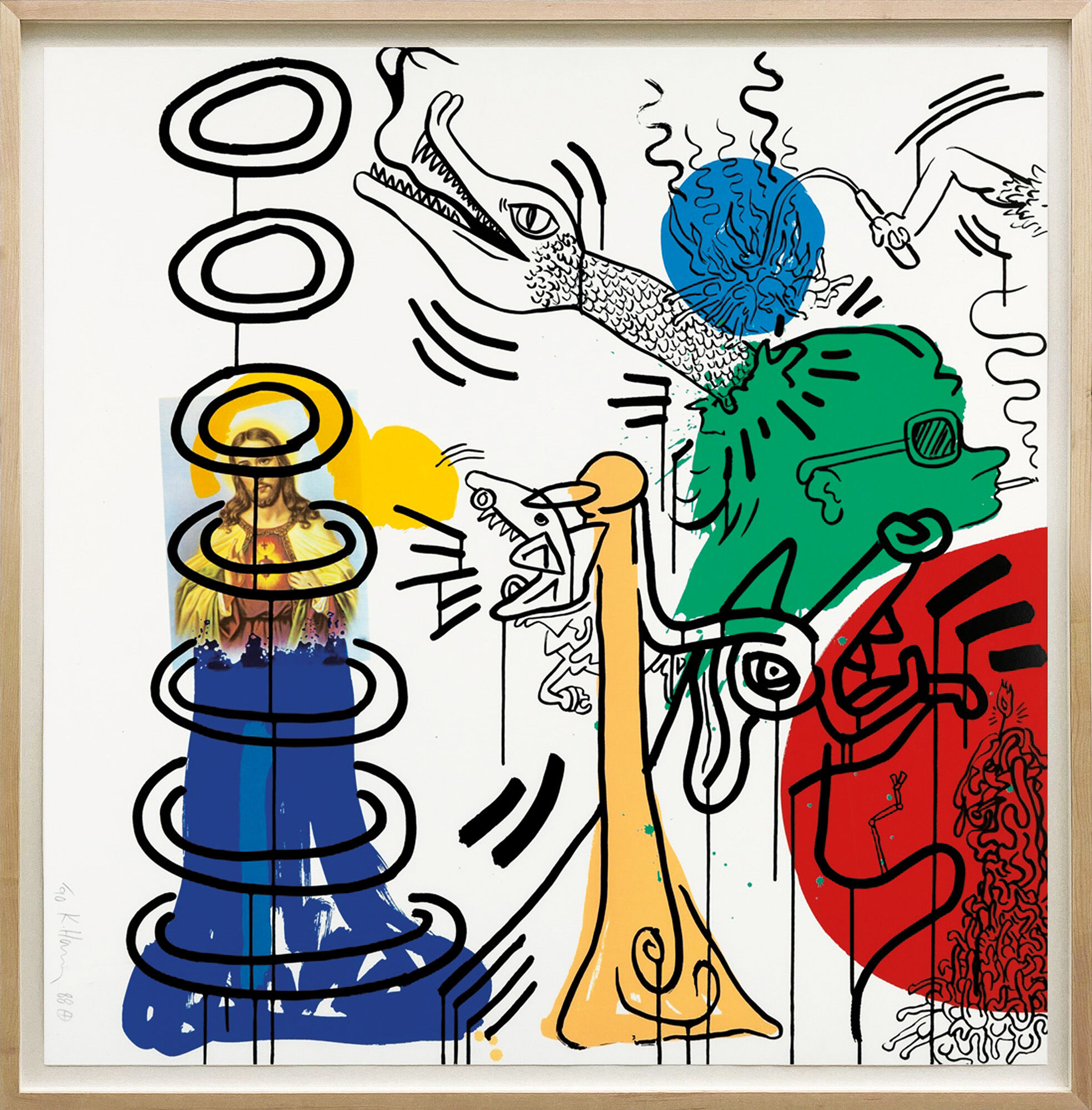Picture "Apocalypse #5" (1988)


Picture "Apocalypse #5" (1988)
Quick info
limited, 90 copies | numbered | signed | dated | colour screenprint on paper | framed | size 103.5 x 103.5 cm
Detailed description
Picture "Apocalypse #5" (1988)
This work was produced in a collaboration between one of the most important authors of the so-called "Beat Generation", William S. Burroughs and Allen Ginsberg and Jack Kerouac. Especially in the 1980s, Burroughs was considered an icon of pop culture and collaborated with numerous artists, writers and filmmakers of his time.
When Keith Haring created the ten-part portfolio "Apocalypse" in 1988, Burroughs provided the accompanying texts for it. The overarching theme of the series is the shock of the HIV virus that was emerging at the time, with which Haring had also been infected shortly before. Given this context, the association of the end of the world - the apocalypse - with the virus is more than understandable. The various symbols of doom and disaster in the work are reminiscent of the bizarre worlds of Hieronymus Bosch.
Haring regularly created works that addressed socially explosive themes, from AIDS to the crack epidemic to apartheid. "Apocalypse" is part of this powerful, historically significant oeuvre of the artist.
Original colour silkscreen, 1988. Edition: 90 copies on paper, numbered, dated and signed by hand. Motif size/sheet size 96.5 x 96.5 cm. Size in frame 103.5 x 103.5 cm as shown.
About Keith Haring
1958-1990
In New York City in the 1980s, an art movement emerged from the obscurity that continues to inspire young artists today with its anarchic character and memorable visual language: With Keith Haring's graffiti, street art was born and his unmistakable figures became part of mass culture.
Graffiti is the colourful symbolic painting of public outdoor spaces, which today is part of our daily lives and often considered a nuisance. Already in the 1970s, young people sprayed words, logos and thickly outlined comic-like figures on the walls of New York subway stations to express their social protest.
Keith Haring, born in 1958 in Kutztown, Pennsylvania, could identify "with the style, taste and colour" of these artists. In 1981, he began his graffiti work in the New York underground after studying art at the School of Visual Arts in New York and Pittsburgh in the late 1970s. He was therefore not one of those artists who started as a street artist and then was discovered, he rather used the streets as a canvas as a trained painter.
He shared his penchant for evenly filling the picture surface with rapport-like sequences of figures with his role models from American abstract expressionism. After his appearance at the documenta in Kassel in 1982, he became friends and collaborated with the Pop artist Andy Warhol.
Keith Haring commercialised his style in his Pop Shop, which opened in 1988. There he primarily sold his motif of the agile "Radiant Child" baby figure radiating joie de vivre and optimism as T-shirt prints. He also used his artistic success to push through unusual concepts.
Keith Haring had been infected with immunodeficiency AIDS and drew attention to this disease in numerous campaigns. Keith Haring died of AIDS-related complications at the age of 31.
The field of graphic arts, that includes artistic representations, which are reproduced by various printing techniques.
Printmaking techniques include woodcuts, copperplate engraving, etching, lithography, serigraphy.


